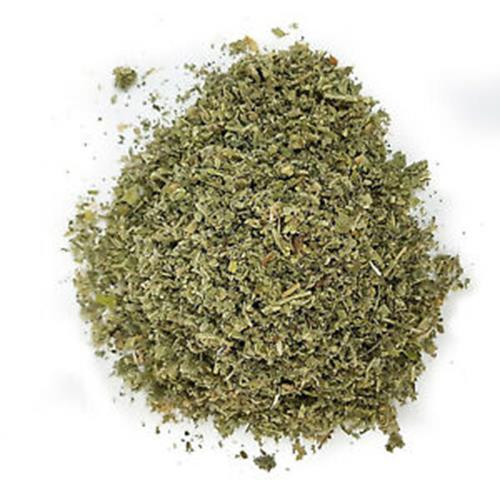Udsalib Paeonia Officinalis- Udsaleev Ood Saleeb Ud Saleeb 100g
UDSALEEV - WHITE PEONY ROOT - UDSALIB - OOD SALEEB - UD SALEEB - PAEONIA OFFICINALIS
Form: Raw Herb
The white peony, Paeonia lactiflora Pall., is a flowering plant native to East Asia.
It does, however, grow in many places of the world, including China, Mongolia, and Siberia.
It's also a popular garden plant in the northern United States.
White peony is also known as:
Bai shao garden peony Chinese peony (or bai-shao)
The dried root of the white peony has been utilised in ancient Chinese medicine for over 1,000 years.
It's been used for centuries to cure a variety of diseases, including fever, inflammation, and discomfort.
Some of these medical benefits have been scientifically proved.
Continue reading to learn more about white peony root and how it is commonly utilised.
Bai shao's Proven Advantages
Scientists are still discovering the therapeutic benefits of white peony root.
Some of the existing research is out of date or involves animals rather than humans.
So far, science has determined the following:
For oestrogen, use white peony.
A 2019 research review said
White peony root includes phytoestrogens, according to a reliable source.
These chemicals have a similar structure to oestrogen, the principal female sex hormone, and they work similarly in the
body.
Furthermore, prior studies have explored the effect of paeoniflorin, a major ingredient in white peony, according to a
2012 reviewTrusted Source.
Aromatase, an enzyme that converts testosterone to oestrogen, has been found to be activated by paeoniflorin.
The substance also inhibits testosterone production.
White peony root is used to treat anxiety and despair.
White peony root has traditionally been used to alleviate anxiety and despair.
In a 2020 investigation on rats, white peony root extract was found to lower serotonin transporter expression (SERT).
This protein typically "captures" serotonin, a neurotransmitter that promotes happiness and well-being, so that it can be
broken down and regenerated.
SERT inhibition stops this mechanism, which elevates serotonin and has an anti-anxiety and antidepressant effect.
According to a 2019 study, paeoniflorin also promotes probiotics in the gut, which may improve the balance of gut flora.
This also benefits anxiety and depression, according to a 2017 research Source.
White peony root is used to treat autoimmune diseases.
Glycosides are found in white peony root.
These are carbohydrate-attached molecules.
This includes, among other things, paeoniflorin.
Total glycosides of peony are the glycosides that are extracted (removed) from the root (TGP).
TGP can modulate your immune system, according to a 2020 reviewTrusted Source.
It has been shown to effectively treat autoimmune disorders such as:
Sjogren's syndrome rheumatoid arthritis psoriasis oral lichen planus
For inflammation, use white peony.
Similarly, TGP possesses anti-inflammatory properties.
A 2019 research review found that paeoniflorin in TGP can reduce inflammatory pathways.
According to the researchers, it may be effective for chronic inflammatory disorders such as:
renal disease arthritis
illness of the liver
Pain relief with white peony root
Paeoniflorin has an analgesic (pain-relieving) effect, according to a 2018 animal study.
This is related to paeoniflorin's anti-inflammatory capabilities in the central nervous system, according to the
researchers.
White peony for blood circulation
White peony root is used to prevent thrombosis in traditional Chinese medicine.
This effect was investigated in a 2016 animal studyTrusted Source.
Paeoniflorin boosted the activity of the plasminogen activator urokinase, an enzyme that aids in the natural resolution of
thrombosis, according to the study.
White peony thins the blood, preventing clots from forming.
It also aids your body's ability to dissolve any existing blood clots.
According to a 2019 review, the active chemicals in white peony, such as paeoniflorin, can enhance blood flow by
suppressing blood coagulation (clotting).
White peony root for skin
A 2016 laboratory study
According to a reliable source, white peony root extract can help reduce hyperpigmentation.
This occurs when your skin appears darker in specific areas, which can range from small regions to your entire body.
The extract lowered melanin when applied to a human skin sample.
Melanin is the pigment responsible for skin colour.
As a result, white peony root extract may be effective in regulating melanin overproduction.
Other Names:
Ood al-saleeb, Fawaaniyaa, Oode Salam, Bai shao yao, Mu dan pi, Paeony, Peony, White Peony, Pivoine officinale, Gemeine Pfingstrose, Benediktinerrose, Echte Pfingstrose, Pumpelrose, Ud Salap, Paeonia officinalis Linn, Mamokh, Mamekh, Ud Saleeb, Ood Saleeb, Ud Saleev, Ood Saleb







